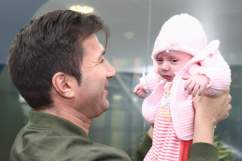
David Ortiz #34 of the Boston Red Sox gives his son, D’Angelo, some batting pointers to celebrate Father’s Day before the game against the San Francisco Giants on June 17, 2007 at Fenway Park in Boston, Massachusetts. (Elsa/Getty Images)
Happy Father’s Day 2017! In the United States, Father’s Day is celebrated on the third Sunday in June, but the holiday honors the duty of fathers everywhere. Other countries that celebrate Father’s Day on the third Sunday in June include Afghanistan, the Czech Republic, Ireland, Mexico, the United Kingdom, and more. However, other dates for Father’s Day are held throughout the year, too.
More than 60 countries throughout the world celebrate Father’s Day. Typical celebrations include attending church, going out to eat, and giving gifts to fathers and grandfathers. Gifts usually include cards.
Modern Father’s Day celebrations started in the early 20th century in the United States, but the idea of celebrating fathers can be traced to the Middle Ages. Learn more about the history and origin of Father’s Day here!
1. It Started With St. Joseph’s Day
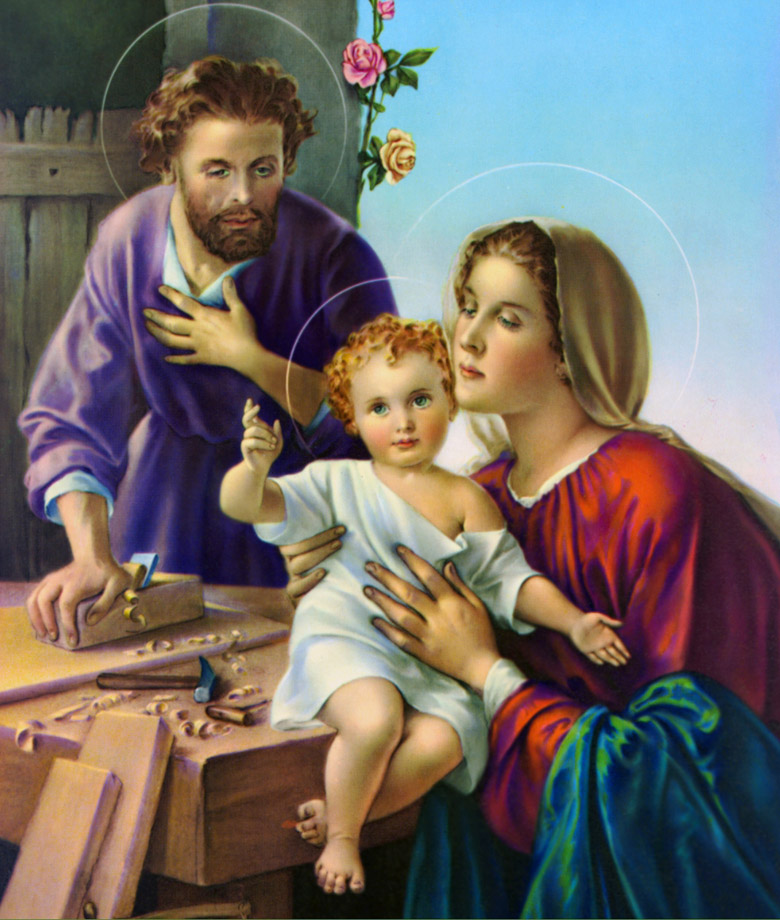
(Flickr / COLEMAN_02)
Prior to modern Father’s Day, the Catholic Church established the Feast of Saint Joseph, a day designated to the foster-father of Jesus Christ. March 19 was dedicated to Saint Joseph in several Western calendars by the 10th century and the custom was officially adopted in Rome by 1479. The feast day falls during the Lenten season. Because of this, it is traditionally a day of abstinence.
The Catholic Church also has another additional feast day for Saint Joseph prior to Mother’s Day. On May 1, Catholics celebrate “St. Joseph the Worker,” which honors the labor movement of International Workers’ Day, also known as “May Day.”
On May 1-3, 1886, about 250,000 factory workers in Chicago took to the streets to protest long working hours with the rallying cry, “Eight-hour day with no cut in pay.” During this time, Chicago was a major industrial center where German and Bohemian immigrant workers were paid about $1.50 a day, or about $36.65 a day adjusted for inflation. These laborers worked 10-hour shifts 6-days a week, according to Working Hours of the World Unite? New International Evidence of Worktime, 1870-1913.
The Federation of Organized Trades and Labor Unions unanimously set May 1, 1886, as a national day of protest for an 8-hour work day. Although it was a peaceful protest, Chicago police fired on the crowd and killed two workers.
The next day a huge rally to protest the police brutality took place at Haymarket Square in Chicago. At just around 10:30 a.m. as a line of police advanced on the rally, someone threw a bomb at the officers, killing one and wounding 6 more. Police open fired, killing four demonstrators and injuring dozens more.
May Day became a holiday the following year to remember the victims who died while protesting for fair and humane working conditions.
Jesus’ father, Joseph, was a carpenter.
2. The Modern American Holiday Has Roots in the Methodist Church
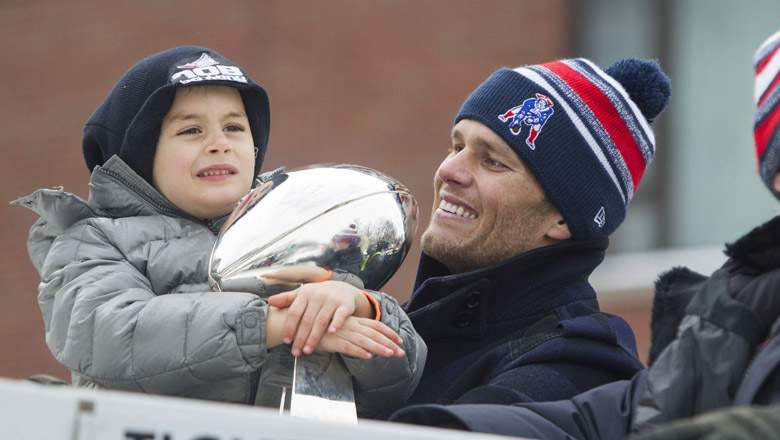
Benjamin Brady (L) holds the Lombardi trophy next to his dad, Patriots quarterback Tom Brady, on a duck boat during the New England Patriots victory parade on February 4, 2015 in Boston, Massachusetts. (Scott Eisen/Getty Images)
Sonora Smart Dodd was the daughter of Civil War veteran William Jackson Smart, whose wife died in childbirth with her sixth child. William Smart took it upon himself to raise his large family near Spokane, Washington, and his strength doing it made Sonora an admirer of his. After learning about Ann and Anna Jarvis’ mission to make a Mother’s Day at a Methodist church sermon, Sonora got the idea for Father’s Day. According to UMC.org:
In 1909 in Spokane, Wash., Sonora Smart Dodd listened to a Mother’s Day sermon at Central Methodist Episcopal Church. Dodd’s own mother had died 11 years earlier, and her father had raised their six children alone. Dodd felt moved to honor her father, and fathers everywhere, with a special day as well.
She proposed her idea to local religious leaders and gained wide acceptance. June 19, 1910, was designated as the first Father’s Day, and sermons honoring fathers were presented throughout the city.
Prior to Dodd’s pioneering of the holiday, a one-time observance of a “Father’s Day” was held in West Virginia, too, on July 5, 1908. The day was an observence of the death of 361 men, 250 of them fathers, in the Monongah Mining Disaster, according to West Virginia Archives & History.
However, the idea for Father’s Day didn’t take hold as quickly as Mother’s Day did. The observance of Father’s Day faded in the 1920s.
Mother’s Day had been floating around since the Civil War, spearheaded by peace groups mostly made up of mothers. Leading this cause was Ann Jarvis, who created “Mother’s Friendship Day” in 1868. The Legacy Project writes:
At the beginning of the Civil War, Mrs. Jarvis called together four of her Clubs and asked them to make a pledge that friendship and goodwill would not be a victim of the conflict between the states. In a display of compassion, courage, and friendship, the members of these Clubs nursed soldiers from both sides and saved many lives.
After the Civil War, Mrs. Jarvis worked as a peacemaker encouraging families to set aside differences created by the polarization of the war. In 1868, she organized a “Mother’s Friendship Day” to bring together families that had been divided by the conflict.
The first modern Mother’s Day was then held in 1908, three years after Ann Jarvis’ death, by her daughter, Anna Jarvis. 6 years later it was signed into law by President Woodrow Wilson.
3. Nixon Signed Father’s Day Into Law
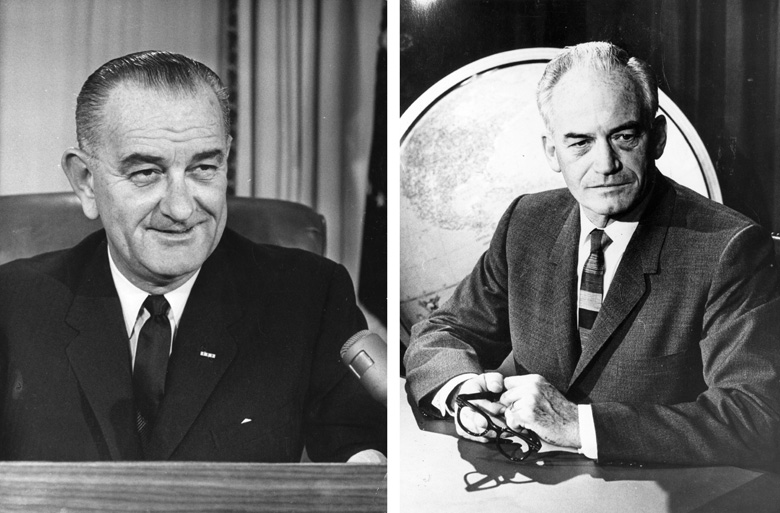
Presidential Candidates Lyndon Baines Johnson (L) and Barry Goldwater. (Central Press/Getty Images)
Father’s Day again became popular in the 1960s and in 1966, Lyndon B. Johnson signed a presidential proclamation declaring the third Sunday of June as “Father’s Day.” However, this did not cement the holiday into law until 1972 when President Nixon established a permanent national observance.
Dodd was alive to see Father’s Day establishment and the honoring of her father. She died in 1974 at the age of 96.
Typical celebrations for Father’s Day include giving cards and other gifts to the paternal figure in the family.
4. Neckties are the Most Common Gift
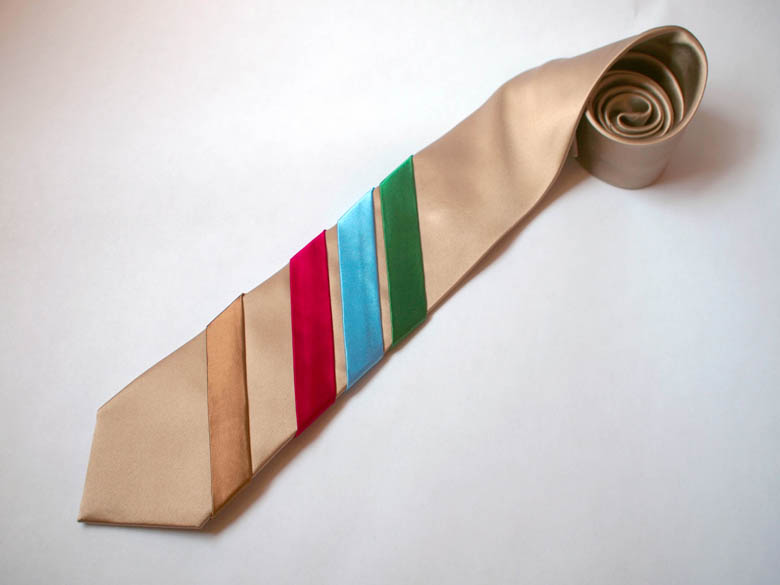
(Flickr / Becky Stern)
Neckties are the most common Father’s Day gift. According to The Holiday Spot’s “History and Tradition of Necktie”:
…neckties started appearing on the earliest Father’s Day greeting cards and retailers sniffed a golden opportunity in this, suggesting this as a great practical gift. And since then the Necktie has been the most popular Father’s Day Gift with children vying to gift the most beautiful and stylish tie to their dad every year. And gift sellers make the most of this traditional and emotional attachment by putting their workmanship to good use, infusing newer designs and introducing latest styles into the much loved neck cloth during Father’s Day.
It’s unclear if Dodd was as unhappy with the commercialization of Father’s Day as Jarvis was with Mother’s Day. Jarvis saw the commercialization of Mother’s Day as everything she was against. She was also upset that President Wilson got credit for it. According to the Deseret News:
Jarvis had envisioned a sweet, even reverential holiday where children would visit their mothers or send handwritten letters. In a thank-you note to Wilson she wrote of a “great Home Day of our country for sons and daughters to honor their mothers and fathers and homes in a way that will perpetuate family ties and give emphasis to true home life.”
5. Why Is It ‘Father’s Day’ & Not ‘Fathers’ Day?’

Indian father Shailesh throws up his son, Harish, at a park in Amritsar on June 19, 2016, on Father’s Day, a day observed in many countries to celebrate fathers and fatherhood. (NARINDER NANU/AFP/Getty Images)
When Dodd first started promoting the holiday to get it established as a national holiday, she spelled it as “Fathers’ Day”, meaning fathers everywhere.
But when a first attempt of passing a bill by Congress for Dodd’s day was tried, it was misspelled as “Father’s Day.” This precedence was retained for every attempt of passing the bill until Nixon finally established it.
Happy Father’s Day!

